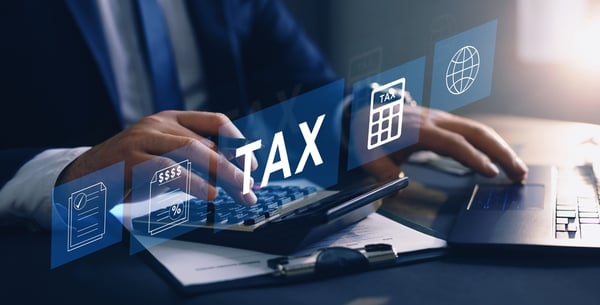Changes in the company’s business strategy may result in the company having more issued share capital than is required for its operation and growth. Companies can take advantage of the court-free process in Hong Kong to conduct capital reduction to optimize excess capital. Based on the uniform solvency test, the procedures for capital reduction have been streamlined to enable all companies to restructure efficiently and in a cost-effective manner.
Evolution of Court-free Capital Reduction Process:
During the running of a company, business owners face a variety of complex issues and challenges. This includes instances where there is a need for capital reduction owing to changes in the company’s structure and financial standing. The need to reduce capital may occur due to the below reasons:
- To return excess capital to shareholders when company has issued capital more than required.
- To cancel or reduce paid up capital that is no longer needed.
- To cancel paid up capital if the company has significant losses in business operations.
- To create reserves arising from the capital reduction. These reserves may be distributed to members as dividends or set off against future losses.
In March 2014, the Hong Kong government introduced Cap 622 of the Companies Ordinance of Hong Kong SAR (“CO”), to facilitate ease of conducting business. The new CO is in line with international standards and provides greater flexibility to firms in structuring their share capital. The reduction of share capital under the old CO was only allowed if it was approved by the shareholders via a special resolution, and if the reduction is subsequently confirmed by the court. Under the CO, a company can undergo an alternative court-free process to reduce its capital, subject to passing the uniform solvency test.
Attractiveness of Capital Reduction under the New Regime:
The court-free process simplifies the procedures for reducing the company’s excess capital. It is a faster and cheaper alternative to the more technical court-sanctioned process and is applicable to companies which are clearly solvent. Unlike under the old regime, there is no requirement in the new CO for attaching an auditors’ report to the solvency statement. The directors should be in a good position to ascertaining the company’s solvency and how it will perform in the future.
Through this process, the company will have greater flexibility in undertaking corporate restructuring exercises. In addition, the new regime eliminates the hurdles for capital reduction, such as the court exercising its discretion and refusing the proposed reduction.
Uniform Solvency Test:
The uniform solvency test based on cash-flow for different types of transactions is a critical element in the process to undertake court-free capital reduction.
The two key elements of the test are:
- There is no basis on which the company is unable to pay its debts immediately after the transaction.
- The company will be able to pay debts during the 12 months immediately following the transaction. Where the directors anticipate that the company will be wound up within that 12-month period after the transaction, the directors have to state instead that the company will be able to pay debts during the 12 months following the commencement of the winding up.
The conclusions of this two-limbed test are to be expressed in a solvency statement. All directors need to sign and certify that the solvency test requirements have been satisfied. Before signing the solvency statement, the directors have to inquire into the company’s state of affairs and prospects, taking into account contingent and prospective liabilities of the company.
What can be achieved under the Capital Reduction:
Capital Reduction is undertaken by firms for a variety of reasons. The reduction of capital in the company’s accounts can reflect the true financial position of the company. The reduction maybe undertaken when it is appropriate for excess capital to be returned to members. The company may also wish to cancel paid-up capital when it has significant losses of a permanent nature. The losses can be written off by the reduction and there is a bringing forward of the time when the company may be in a position to pay dividends to its members
Companies can conduct reduction of capital by reducing the liability on it unpaid shares, canceling any paid-up share capital, and by paying off any paid-up share capital which is in excess. This can be achieved in different ways, including by reducing share capital through reduction in issued shares & issued capital and by reducing the paid up amount on the issued shares.
Key Considerations for Directors in Carrying out Capital Reduction:
Capital reduction can be quite tedious for firms. It is essential that directors pay close attention to fulfilling all requirements before taking the decision. They should be aware that the extended use of the solvency test under the CO will increase directors' exposure to potential liabilities (both civil and criminal).
The Directors should also take into consideration the following matters to ensure the reduction is in the best interests of the company and the shareholders as a whole:
- Are there any special reason for keeping the current large amount of capital, such as:
(a) any special trading requirements for local or foreign business of the Company;
(b) any licensing requirements;
(c) agreements with trading partners; or
(d) any other historical reason? - Is the Company still obliged to comply with the above requirements and maintain such a large amount of capital?
- How much capital does the Company want to reduce and return back to the shareholders?
In certain non-standard cases, court-sanctioned process may be worth considering. For example, in cases where objections are anticipated from shareholders/creditors or where there are divided views on the solvency position of the company among directors. The company needs to be aware that any creditor or non-approving shareholder may, within five weeks after the special resolution is passed, apply to the court for cancellation of the resolution. In this case, the Court will pass an order either confirming or cancelling the special resolution.
In cases where companies are looking for restructuring beyond capital reduction, there are a few other options based on the revised CO. Companies can also choose to conduct restructuring through court free amalgamation. Irrespective of the options used for capital restructuring, it is imperative on the directors to ensure they have taken due consideration when deciding to restructure. Shareholders must be provided with adequate information to approve the special resolution in capital reduction process. It is incumbent upon the Directors to ensure there is no prejudice and creditors’ interests are not adversely affected. The directors need to make sure that the capital restructuring is reasonable, and that all the shareholders and creditors are treated fairly.







